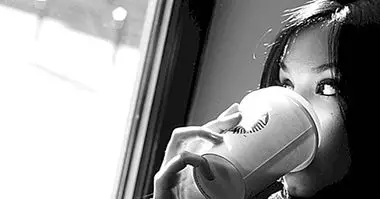How to get rid of the negative labels that others put on us
We live in the society of branding, all the objects that surround us they carry a label where you specify your brand, its components, its owners, its geographical origin or its way of employment, among many other things.
These labels have obvious utility, since lead us to get a pretty good idea of what we have in front of us , with a single glance. For example, in the case of a product sold to the public, at a glance we will make the idea (more or less approximate to reality) of whether it is of greater or lesser quality, before even knowing its properties in depth.
Labels on people: between prejudice and ignorance
The fact is that the subjects carried on slopes "labels" long before they were carried by the objects. Tags that are given to us by the people around us and with whom we live , and even labels that we put ourselves for some reason.
These labels can define us at some specific moment and under certain circumstances (or not) but people, unlike objects, we have a great capacity for change in the way we relate to other people and ourselves. Plasticity and resilience are the elements that give us the power to change.
Can you fight against a label?
The advantages of these categories are obvious: save effort .
However, in certain circumstances It can be really complicated to get rid of a negative label (or even positive if we consider that this can negatively affect us in some sense).
The story of María "La Patosa"
To explain what a label is and how it can come to face us, I propose the following story :
Maria was a twelve-year-old girl who lived with her family. She had a twin brother who was very agile in competitive sports, and she, on the other hand, did not excel for that ability, although she was not bad either. His brother, when they played together, called him "Maria the ducky." Every time they went to play soccer in the town square, her parents told her brother "take care of Maria and do not run much, you already know that she is not as agile as you".
Later, when it was her turn to go to school, the girl did not want to participate in sports, and she justified herself with her friends "it's just that I'm a dump." Maria was growing and with it the label. His friends joked: "Do not let Maria do that, she is a clumsy and she will fall". And so time went by.
When she arrived at the institute, Maria was already La Patosa, when it came to performing things that required physical agility, she became very nervous and then, obviously, the nerves played tricks on her, reaffirming her clumsiness. But Maria, she was not clumsy, Maria wore the clumsy label.
Do you hear this story of Maria "La Patosa"?
The labels usually appear in groups, sometimes unimportant, others with some use in certain circumstances. There are many labels that are like a post-it and they are temporary, but there are also tattoo: lso they become chronic leaving a mark on our personality .
The Pygmalion Effect and expectations
There are several areas of psychology that investigate the important role that labels have in our way of relating to each other. It is known, for example, that an essential part of our daily behaviors depend on the expectations that they have not only about the concrete situations (a master class, a play, etc.) but also about the people involved in these situations.
Thus, for example, it has come to describe something called Pygmalion effect: something as abstract and immaterial as expectations about oneself and other people has a material embodiment in our way of acting, even taking our capabilities beyond the limits what we thought we had
That is why it's worth taking some time to reflect on whether the labels we use to describe ourselves they help us to understand us better or, on the contrary, they limit us unnecessarily.
Ending negative labels
Eliminating these limiting labels consists of, basically, recognizing them as such and acting accordingly.
For the former it is necessary ask yourself a series of questions about our own self-image . You can start by first responding to these points:
- What labels do I have?
- What adjectives have accompanied me throughout my life?
- Who put them on and why?
- Which ones have helped me?
- Which ones have hurt me?
- Which ones have been useful and are not?
From these questions, it is advisable to move on to more specific ones for the specific cases, in order to reach an analysis as exhaustive as possible. However, this would not take a long time, so commit to try to reach clear conclusions that allow further progress from that point.
From there, It is good to examine our habitual behaviors and reflect on whether we are being consistent with the self-image renewed we saw after the examination period. This may take a while, but all the great changes deserve it.



















